July 16, 2012
I am not sure if you are familiar with anime or manga, so I will take the liberty of briefly explaining it. Simply put, anime is Japanese animation and manga is Japanese comic books (it would do me well to note here that this is the American definition; in Japan, anime means any type of animation and manga means any type of comic). You probably know some of the most famous animes, like Pokemon, Dragon Ball, and Sailor Moon. However, these specific anime are more aimed at children, and are not really representative of the average Japanese anime. Other popular anime you may know include Bleach, Inuyasha, One Peice, or Naruto. However, I would not say these are especially representative of all anime either, as there is such a broad scope of topics that anime covers.
Anime and manga covers a wide array of topics and often times are very mentally stimulating. It is my personal opinion that the content of many anime and manga delves deeper into human psyche and world issues than do most American television shows. Though, I think that is something you should see for yourself. ![]()
Because of the wide array of topics that anime covers, anime and manga is read and watched by all age groups in Japan, including adults. Unlike in America, where cartoons are usually aimed at children, there are anime and manga in Japan for everyone. You can find ones aimed at toddlers, elementary schoolers, teenagers, young adults, and adults. Anime and manga cover almost any genre you can think of, including adventure, action, romance, drama, comedy, horror, mystery, fantasy, thriller, etc. But, they also have genres that are found almost exclusively in Japanese anime and manga. One such genre is bishounen (pretty boy) and bishoujou (pretty girl), which usually features sparkly (sometimes literally) and idealistic characters.
Anime and manga differ from Western cartoons and comics in the style of drawing. For example, anime and manga artists tend to pay more attention to proportionality than do American animators. It is not uncommon for American cartoons to feature characters with very strange proportions (think anything on Cartoon Network); however, that is uncommon in Japan. Nonetheless, Japanese styles of drawing do have overly large eyes. Another large part of anime and manga are facial expressions. Japanese animators make use of many more facial expressions than do their American counterparts, and they often have specific iconography to represent certain emotions.
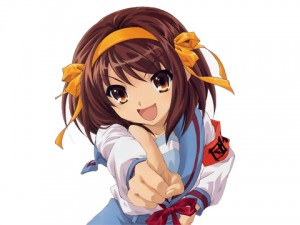
Haruhi Suzumiya
Anime is omnipresent throughout Japan. You can see anime-related products ranging from action figures to everyday around-the-house products such as cooking ware. Anime and manga characters are even used in advertisements! Here are some pictures of anime-related things you will see in Japan. (By the way, One Piece is the top manga in Japan right now, so you will see a lot of pictures of it.)
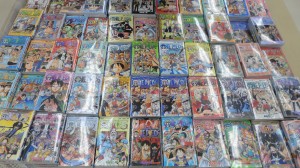
One Piece manga
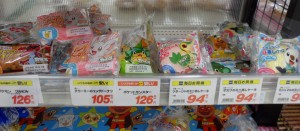
Pokemon sandwiches
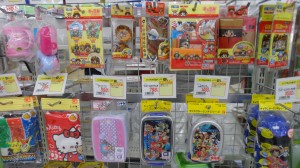
One Piece, Pokemon and Hello Kitty bento boxes (lunch boxes)
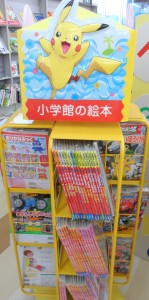
Elementary schooler books
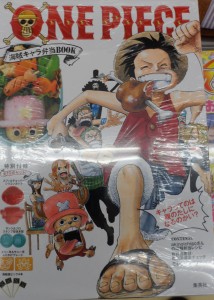
One Piece lunch recipesPokemon lunch recipes
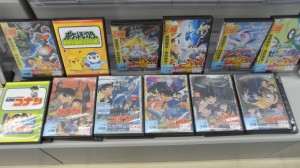
Some anime videos
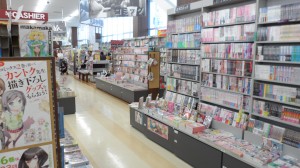
Manga section of a store
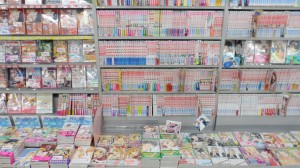
Closer picture of some manga